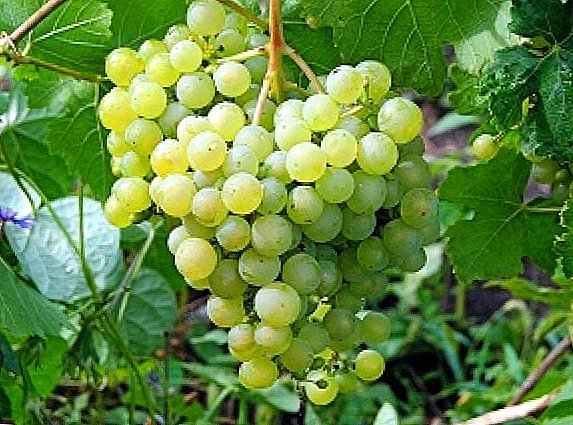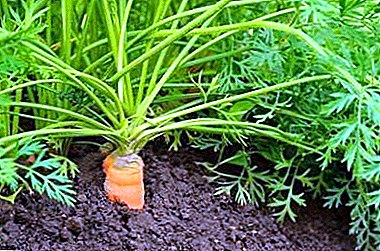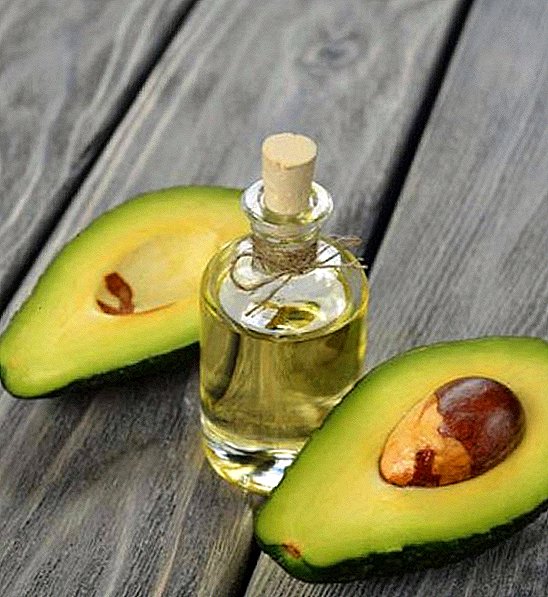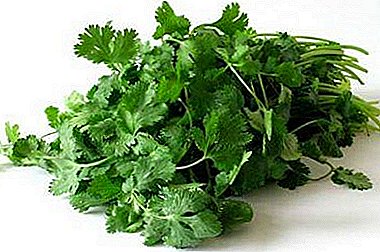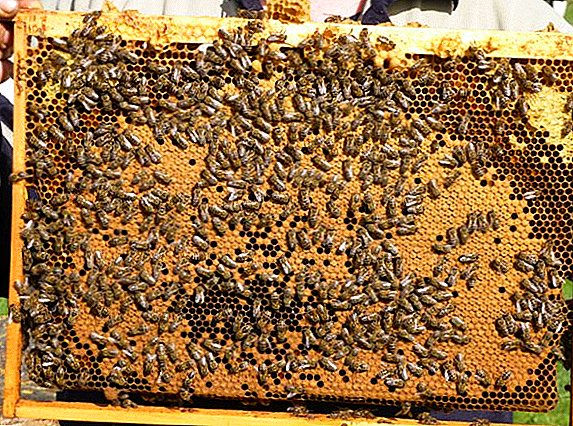 If your dream is an apiary, then first of all you need to figure out what breeds of bees exist and what are the differences between them. Each breed is distinguished by its performance, character, resistance to frost, as well as appearance.
If your dream is an apiary, then first of all you need to figure out what breeds of bees exist and what are the differences between them. Each breed is distinguished by its performance, character, resistance to frost, as well as appearance.
To date, around the world you can count about two dozen species of bees. In this article we show the most common breed of bees.
Yellow Caucasian
All yellow bees of Armenia, Georgia, and Azerbaijan can be attributed to the yellow Caucasian breed of bees. Body color in bees is gray with bright yellow rings. A one-day bee weighs 90 mg, and its proboscis is 6.6-6.9 mm. The weight of the barren uterus is 180 mg, and that of the fetus - 200 mg. 
Did you know? The fertility of the uterus of this breed of bees is striking: it can reach up to 1,700 eggs per day. Its brood uterus is usually sown in the lower part of the honeycomb.In warm, mild climates, yellow Caucasian bees feel most comfortable. Long cold winters are not for them. In natural habitats, at temperatures up to +8 ° C, can make winter flights. The use of honey in the winter is extremely low. In early spring, the performance of yellow Caucasian bees is actively developing.
The efficiency of this species of bees is good, they release up to 10 swarms and are capable of laying about 100 queen cells. Experienced beekeepers say that there may be 2-3 wombs in a swarm, and after a swarm of bees enters the hive, they leave the best uterus, while killing the rest.
Yellow Caucasian bees are quite peaceful. When inspecting a nest of bees, the queen does not stop its work, and the bees do not leave the frame. Frames plentifully propolis, leaving a wet, dark-colored signet of honey.
Bees steal well enough and can attack other families, and they protect their nests poorly. They are capable of harvesting propolis and pollen well, working actively, they can collect a lot of honey. The honeyiness of the bees is low. They quickly change one bribe to another, performance in bad weather is not reduced. They adapt to hot climates quite well, as well as to transportation.
Central Russian
The Central Russian breed of bees today is spread all over the world, however Central and Northern Europe is considered its homeland. Young bees of this breed are rather large, they can weigh up to 110 mg. The body of the bee is dark gray, covered with sparse long hairs, 5 mm long, and proboscis - up to 6.4 mm. When they are attacked by bees, they can defend the nest quite badly and are not able to steal from others. 
Important! These are rather angry bees: when they inspect their nests, they will behave aggressively, leaving honeycombs, and sit in clusters on the lower frame.Propolisut nest in moderation. They are well used by violent bribes. First of all, the bees fill the honey shop; if the place is filled, they use the nest, while reducing the breeding of the brood. If they lose their uterus, then in the family for a long time the tinder bees do not appear.
Unlike other species, Central Russian bees are better able to withstand frost better than others. Since in the winter club carbon dioxide is within 4%, this leads to the fact that the bees are at rest, reducing activity. This type of bee is very good. Quite often, half of the apiary is in swarm condition.
Bees collect honey from buckwheat, linden and heather. By productivity, they can exceed other types of bees. Signet honey they have white. They can collect a large amount of pollen and have a good waxiness.
Mountain Gray Caucasian
The mountain gray Caucasian breed of bees has found its place in the mountainous regions of the Transcaucasus and the Caucasus. Bees of this species are very peaceful. They have the longest proboscis - up to 7.2 mm. The weight of one-day working bees reaches up to 90 mg, fetal females up to 200 mg, and barren - up to 180 mg. The fecundity of females reaches up to 1500 eggs per day. 
Nest propolisovano abundantly, signet honey is wet, dark color. This breed of bees often attacks other nests, and they can protect themselves well. If you look around the nest of bees, they will behave friendly, without stopping the work on the comb, even if you get it. A distinctive feature of this species is that they collect nectar very well. Without difficulty, they can find a source of a bribe, quickly changing the plants on which nectar is found.
With sufficient secretion of nectar from buckwheat and linden, they do not exceed the average Russian bees in productivity. First of all, honey is collected in the brood part of the nest, and then in extensions. The productivity of gray Caucasian bees is low, only 4-5% can be in a swarm. But able to lay from 8 to 20 queen cells.
It is easy to switch from a swarm to a working one for bees. If bees overwinter not in their native lands, then their susceptibility to frosts decreases, in contrast to central Russian ones. Transportation tolerate well.
Carpathian
The habitat of this species of bees is the Carpathians. The body of a bee is gray, the proboscis is 7 mm long, and the weight of working bees is 110 mg. The fetal uterus weighs up to 205 mg, and the barren - 185 mg. In the springtime, when the intensity of development of families is high, the fecundity of the uterus can reach up to 1,800 eggs per day.  The peculiarity of these bees is that they are able to start collecting works at an early age. Bees collect nectar, which contains little sugar. The Carpathian bees are very peaceful, they remain calm when they inspect the nest, without stopping their work, their efficiency is low.
The peculiarity of these bees is that they are able to start collecting works at an early age. Bees collect nectar, which contains little sugar. The Carpathian bees are very peaceful, they remain calm when they inspect the nest, without stopping their work, their efficiency is low.
The seal of honey is white and dry. The productivity of families is high, can reach up to 40 kg. Carpathian bees can easily find the source of a bribe, quickly switch from one to another, while not being in a swarm. However, if the weather is adverse, the bees do not fly out for a bribe.
Carpathian bees are inferior in terms of wax productivity to Italian and Russian breeds. When attacking the nest protect well, while prone to theft. The preparation of pollen in this breed is low. Carpathian bees are indifferent to the wax moth, so you should pay attention to combating pests combs.
Ukrainian steppe
The Ukrainian breed of bees lives in the areas of the forest-steppe zone of Ukraine. The body of the bee is light gray in color, the length of the proboscis reaches up to 6.63 mm. The weight of the barren uterus is about 180 mg, and that of the fetus is 200 mg. The fecundity of the uterus reaches up to 2300 eggs per day, while it may increase to the main collection of honey from lime, acacia. 
In spring time, families develop slowly because they do not fly in cool weather. When viewed from the nest bees behave calmly, but they are not as peaceful as gray Caucasian ones. Medium propolis nest, moderate honey harvest.
The seal of honey is white and dry. In adverse weather, the bees do not fly out for nectar. When the time comes for the main harvest of honey, the bees learn sunflower, which grows in Ukraine in large numbers. By collecting nectar, Ukrainian bees can fly away from the apiary for 5 km.
This breed is medium average. Bees are not inclined to steal, but when attacking, they can perfectly protect their nest. Their pollen harvest is low. The productivity of Ukrainian bees is quite good, up to 40 kg. Experienced beekeepers report a 120 kg honey harvest. Resistance to frost is quite high. Transportation is well tolerated.
Italian
The homeland of the Italian bee breed is modern Italy. All breeds of honey bees are in demand, but this species is the most common in the world. There are several types of Italian bees: gray, three-strip and golden. This is a fairly large bee, the weight of the worker reaches 115 mg, and the proboscis up to 6.7 mm. The mass of the barren female is 190 mg, and the fetus is 210 mg. The fecundity of the uterus reaches up to 2500 eggs per day, in large quantities seeding on honeycombs. 
When inspecting the nest bees are at rest. It is easier for bees to find a source of nectar near the nest, so they can often steal from neighboring families, and they protect their nests well. This breed has good productivity, can easily switch from one source to another bribe.
Development begins in late spring and lasts until the end of summer, which gives them the opportunity to build up their families. First of all, the bees collect honey in the upper extensions and shells, and when they are full, the collection is transferred to the nest.
Signet honey is wet, white or gray. In unfavorable weather for nectar not fly. They build beautiful, even, very neat honeycombs. Not bad harvested propolis and pollen. Italian bees have a moderate productivity.
Important! Since the bees are guided by color, and not by location, they can fly into neighboring hives.The bees of this breed are thermophilic and therefore poorly resistant to frost. Transportation tolerate poorly.
Karnik, or Krainskaya
The Karnik or Krajina breed of bees lives in Austria and Yugoslavia. The body of the bee is dark gray in color, the length of the proboscis reaches up to 6.8 mm, and the weight of the working bee is 110 mg. The infertile uterus weighs 185 mg, and the fetal - 205 mg. The fecundity of the uterus reaches 200 eggs per day. 
A characteristic feature is the peacefulness of karnikas, but when inspecting the honeycomb, they behave restlessly and constantly move along it. The krainsky bees are moderately moderate; if there are no bribes, it increases. The development of families in bees can be characterized in some degree: the family grows quite quickly, so you need to have time to expand the nest and start collecting honey. When collecting honey, first of all, they fill the nest body, and only then the extensions and the upper bodies.
Signet honey is wet, from dark to white. In adverse weather for a bribe do not take off. Krajina bee prefers a weak, but long honey collection, especially if it is collected from the drop. In terms of frost resistance, they are between the Central Russian and Caucasian bees.
Buckfast
Backfast bees breed is the most popular and recognized all over the world, their characteristic is one of the best. They are very hardworking and not evil at all. Bees can take root in any conditions, but most of all they love rain. Initially, they were used to combat ticks that were threatened by bee trachea. The whole apiary could die from this parasite. 
Did you know? This breed brought the British monk. In order to obtain a new breed, he crossed dark and Italian bees, and as a result, a resistant, tenacious breed of buckfast appeared.
Backfast was taken from the Italian breed, so they have a lot in common. The only difference is in the dark color of bakfast, and their size and length are the same. Bakfast bees tolerate poor frost, but are well resistant to diseases. Have a great sense of peace, peace-loving, do not attack other bees.
Characterized by high productivity in the production of honey, bring a lot of pollen, working all day. One uterus can lay eggs for a long time. Not afraid of wind, rain, fog. The breed backfast even in the autumn, at a temperature of +10 ° C, collects pollen and nectar. In the nests little propolis, unlike the Italian breed.
Did you know? Bakest bee breed can interbreed with other breeds.You can inspect the nest at any time. When inspecting the nest bees free the upper part of the frame. In contrast to the Italian bees, the breed Bakfast in January remains in the nest, waiting for the warm weather.



